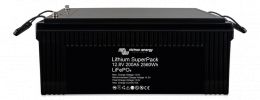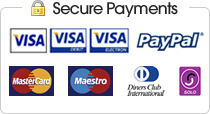Lithium 12.8V, 200Ah SuperPack (M8)

| Name | Code | Power (W) | Dim. (L x W mm) | Price | UK Del. | ||
|---|---|---|---|---|---|---|---|
| Lithium 12.8V, 20Ah SuperPack (M5) | 08003VT44 | 256.00 | 181 x 167 | £220.32 | £6.25 | Buy Now | |
| Lithium 12.8V, 60Ah SuperPack (M6) | 08003VT45 | 768.00 | 229 x 213 | £497.66 | £15.00 | Buy Now | |
| Lithium 12.8V, 100Ah SuperPack (M8) | 08003VT46 | 1280.00 | 330 x 220 | £859.25 | £25.00 | Buy Now | |
| Lithium 12.8V, 200Ah SuperPack (M8) | 08003VT48 | 2560.00 | 520 x 208 | £1530.58 | £25.00 | Buy Now | |
| Lithium 25.6V, 50Ah SuperPack (M8) | 08003VT49 | 1280.00 | 330 x 220 | £1102.90 | £25.00 | Buy Now |
Integrated BMS and safety switch
The SuperPack batteries are extremely easy to install, needing no additional components.
The internal switch will disconnect the battery in case of over discharge, over charge or high temperature.
Abuse proof
A lead-acid battery will fail prematurely due to sulfation:
• If it operates in deficit mode during long periods of time (i.e. if the battery is rarely, or never at all, fully charged).
• If it is left partially charged or worse, fully discharged.
A Lithium-Ion battery does not need to be fully charged. Service life even slightly improves in case of partial charge instead of a full charge.
This is a major advantage of Li-ion compared to lead-acid.
The SuperPack batteries will cut-off the charge or discharge current when the maximum ratings are exceeded.
Efficient
In several applications (especially off-grid solar), energy efficiency can be of crucial importance.
The round-trip energy efficiency (discharge from 100% to 0% and back to 100% charged) of the average lead-acid battery is 80%.
The round-trip energy efficiency of a Li-ion battery is 92%.
The charge process of lead-acid batteries becomes particularly inefficient when the 80% state of charge has been reached, resulting in
efficiencies of 50% or even less in solar systems where several days of reserve energy are required (battery operating in 70% to 100% charged
state).
In contrast, a Li-ion battery will still achieve 90% efficiency even under shallow discharge conditions.
Can be connected in parallel
The batteries can be connected in parallel. Series connection is not allowed.
Use in upright position only.
Related Documents
- Datasheet-12,8V-&-25,6-Lithium-SuperPack-EN



